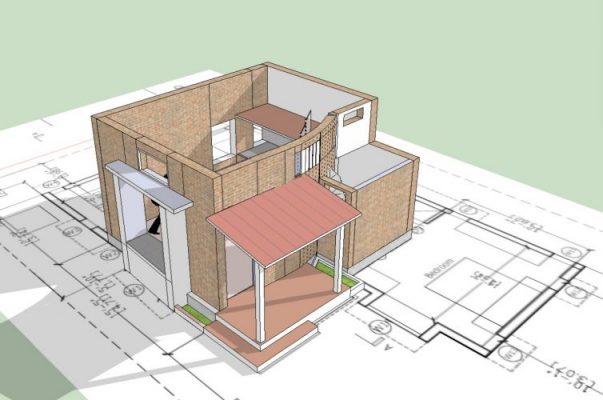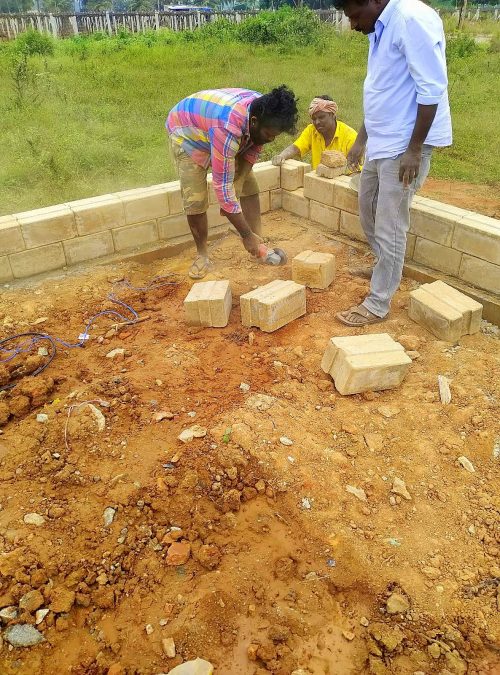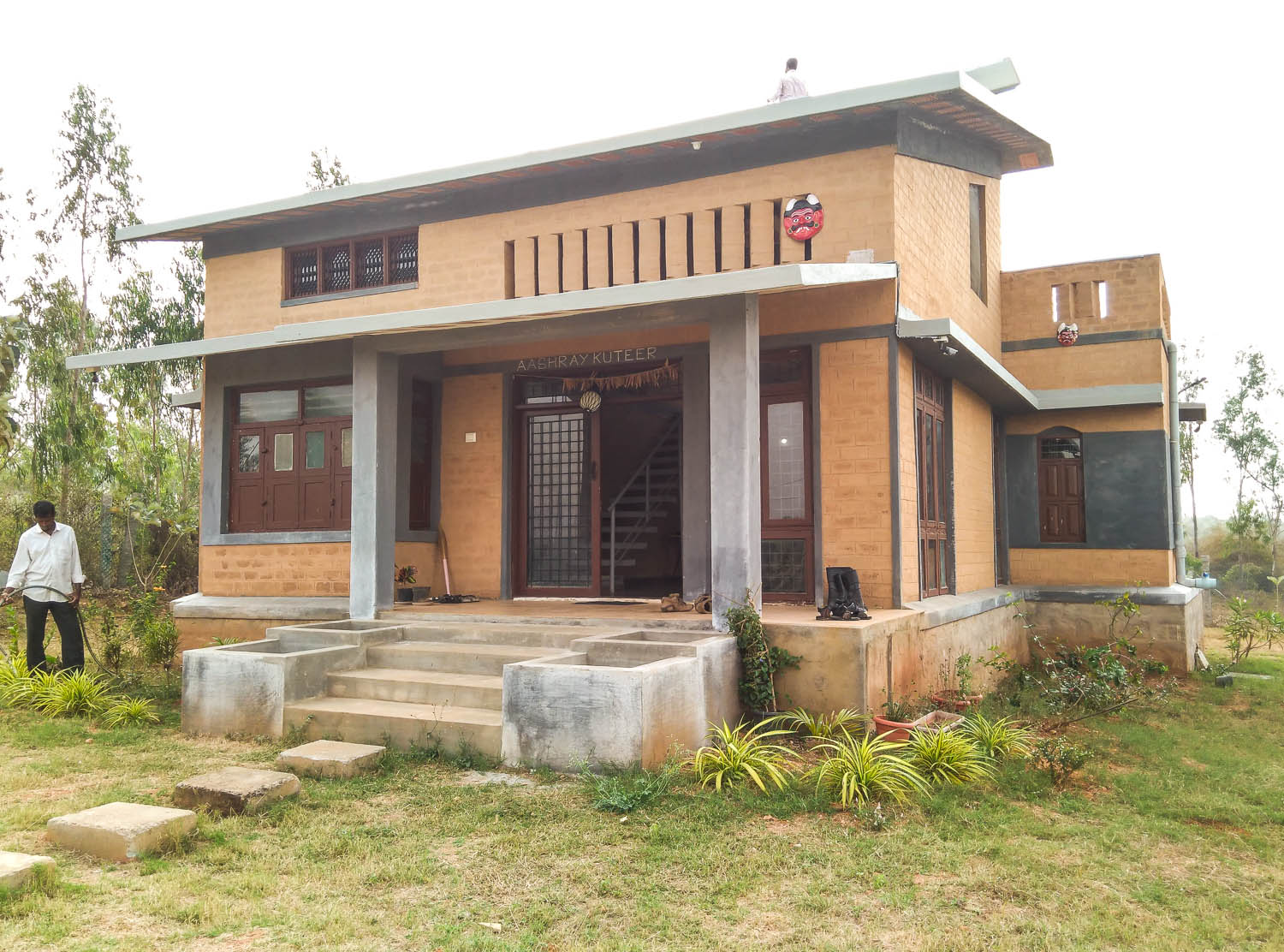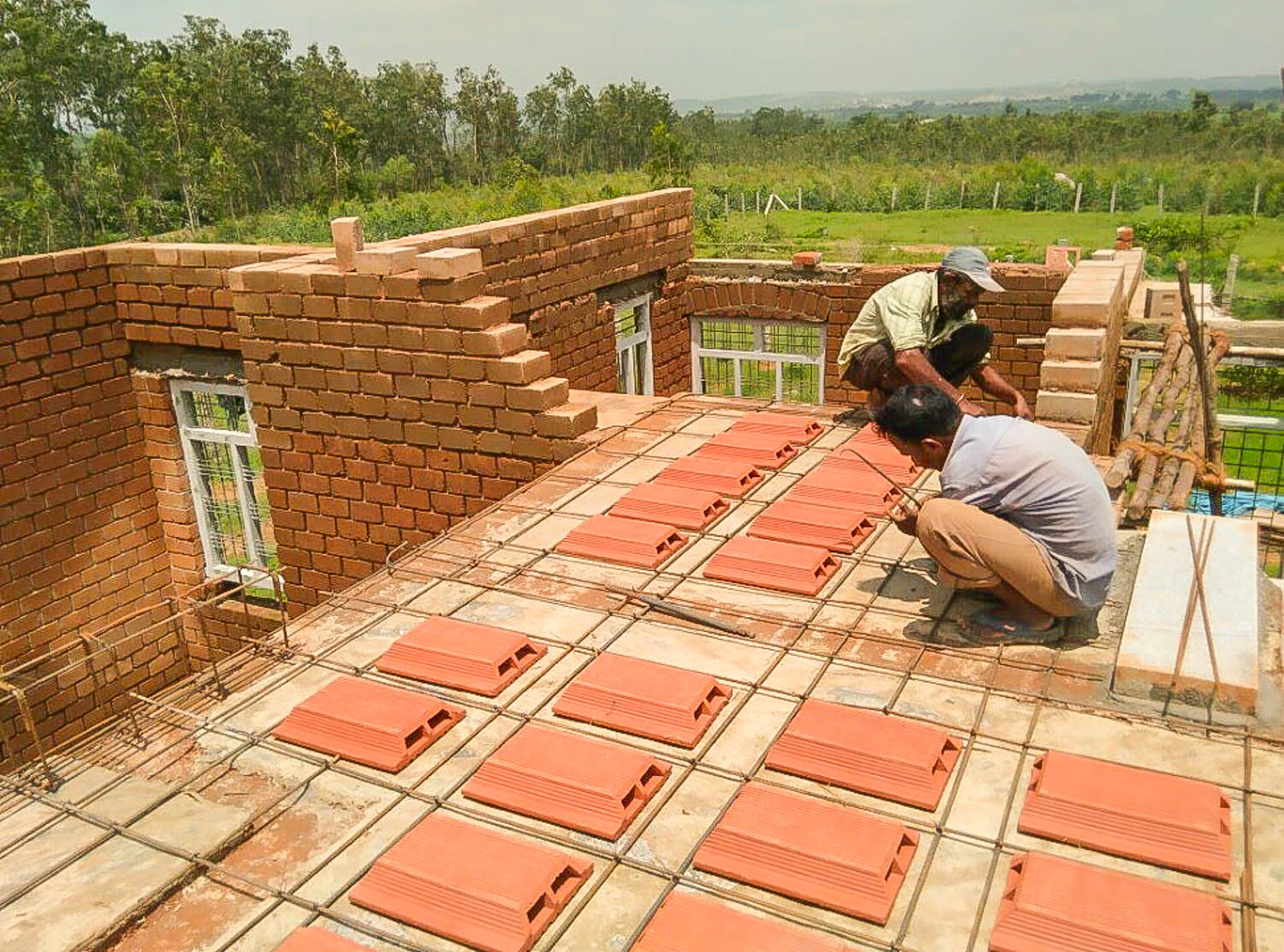Green Buildings
We want to be as gentle on mother earth as possible while making buildings. Since the start of our practice back in the year 2001, our focus has been to design green-buildings, buildings that are designed, constructed and operated with minimal impact on the environment. Our designs are aimed at reducing the carbon footprint of a building by making sure that on a daily basis, it uses less energy by…
- water conservation & harvesting (including grey water recycling)
- renewable energy like solar power and wind power
- no artificial light during the day-time
- natural ventilation and shade
- effective waste management
So, the building does not have to be built of mud alone to qualify for a green building! Any existing building can be retrofitted with all/some of the above mentioned features to become a green building in its own right.
Turnkey Projects | Green Construction
We specialize in sustainable construction techniques like mud-block walls and filler-slabs & roofs and mud-plaster. Our team consists of an experienced contractor with his masons, plumbers and electricians who can execute a project for you if construction is something that gives you shivers!




 Spaces filled with light and air, flowing effortlessly into one-another to create a weekend house that makes the family and friends come together.
Spaces filled with light and air, flowing effortlessly into one-another to create a weekend house that makes the family and friends come together.